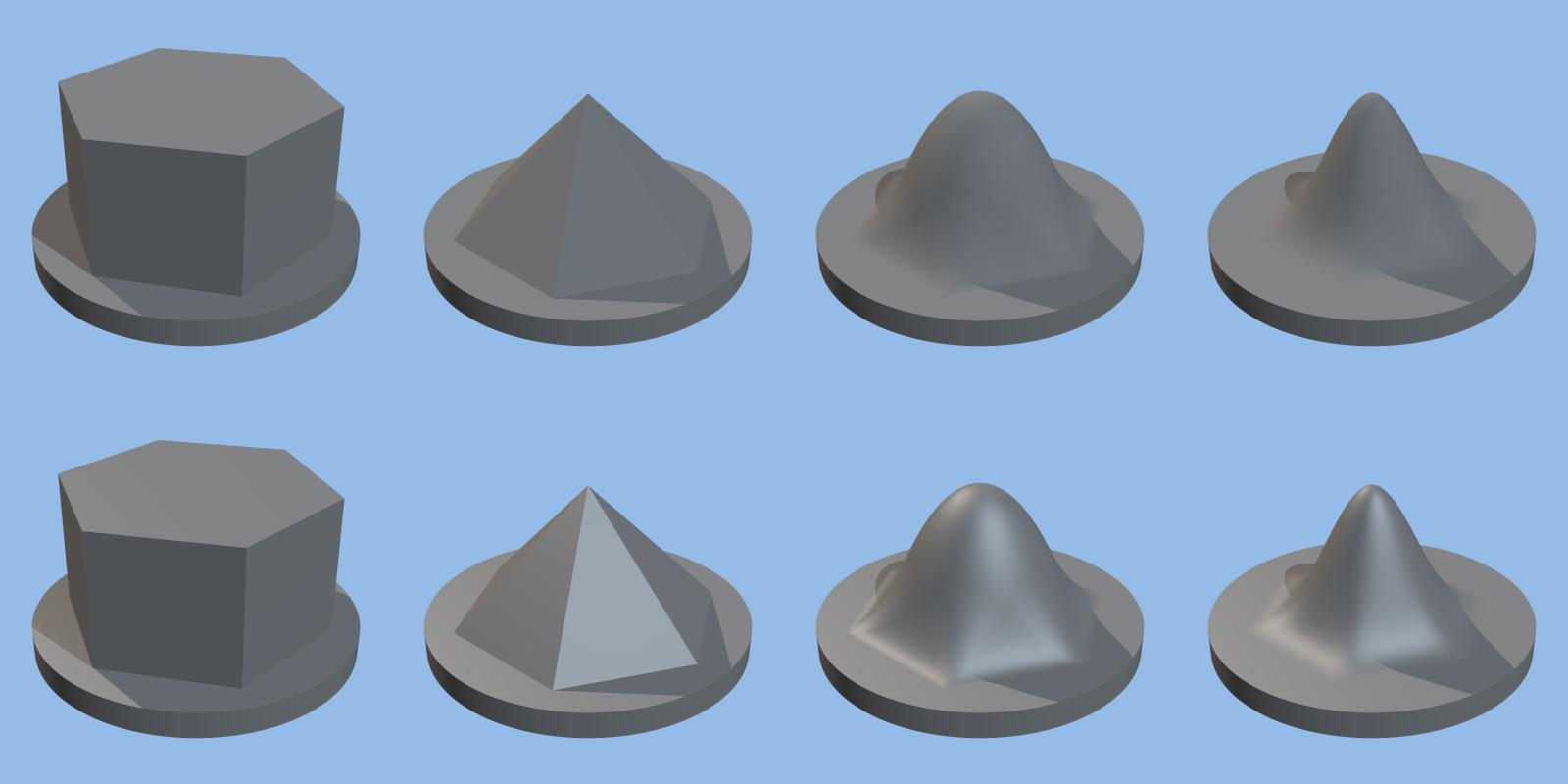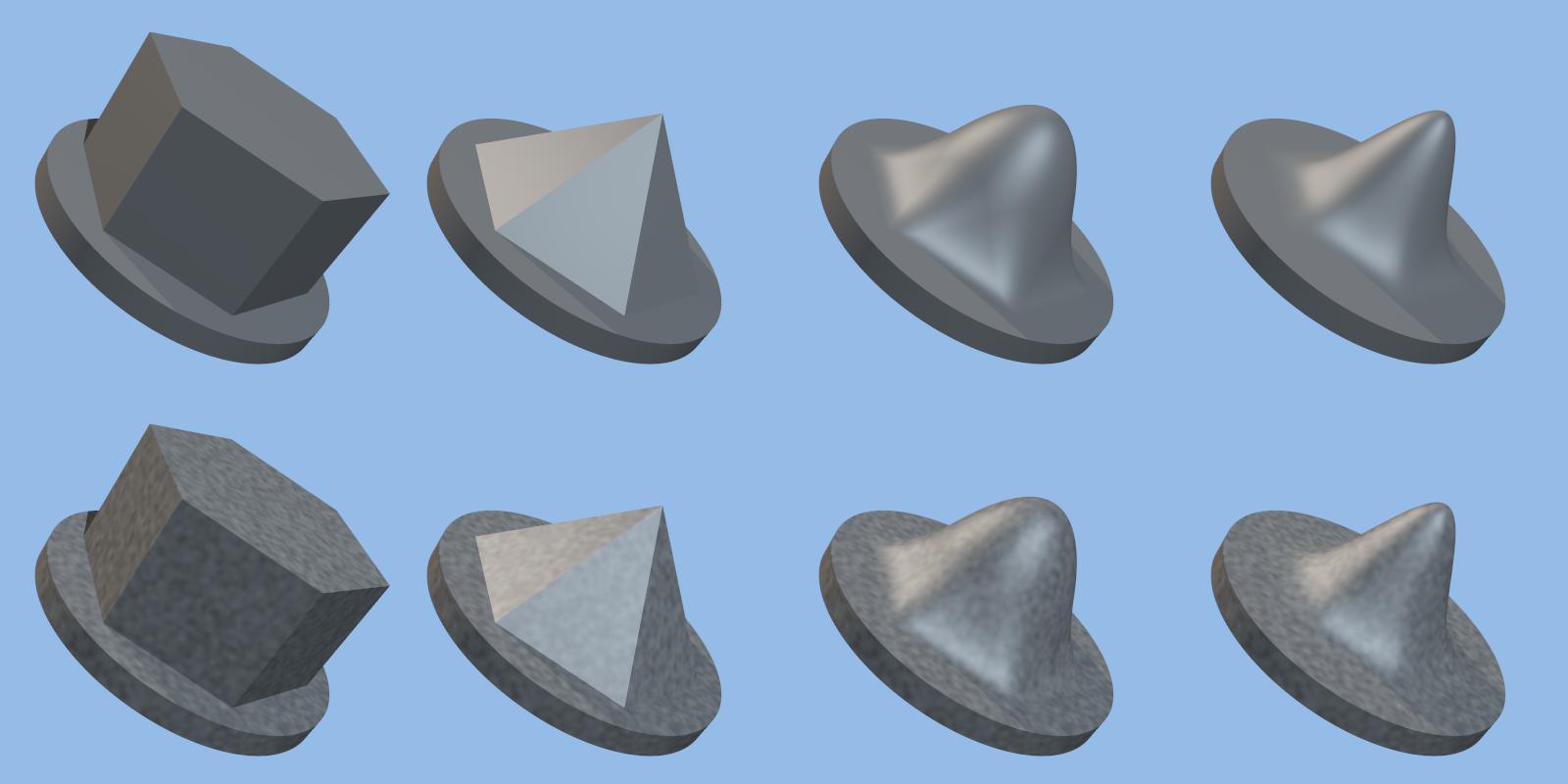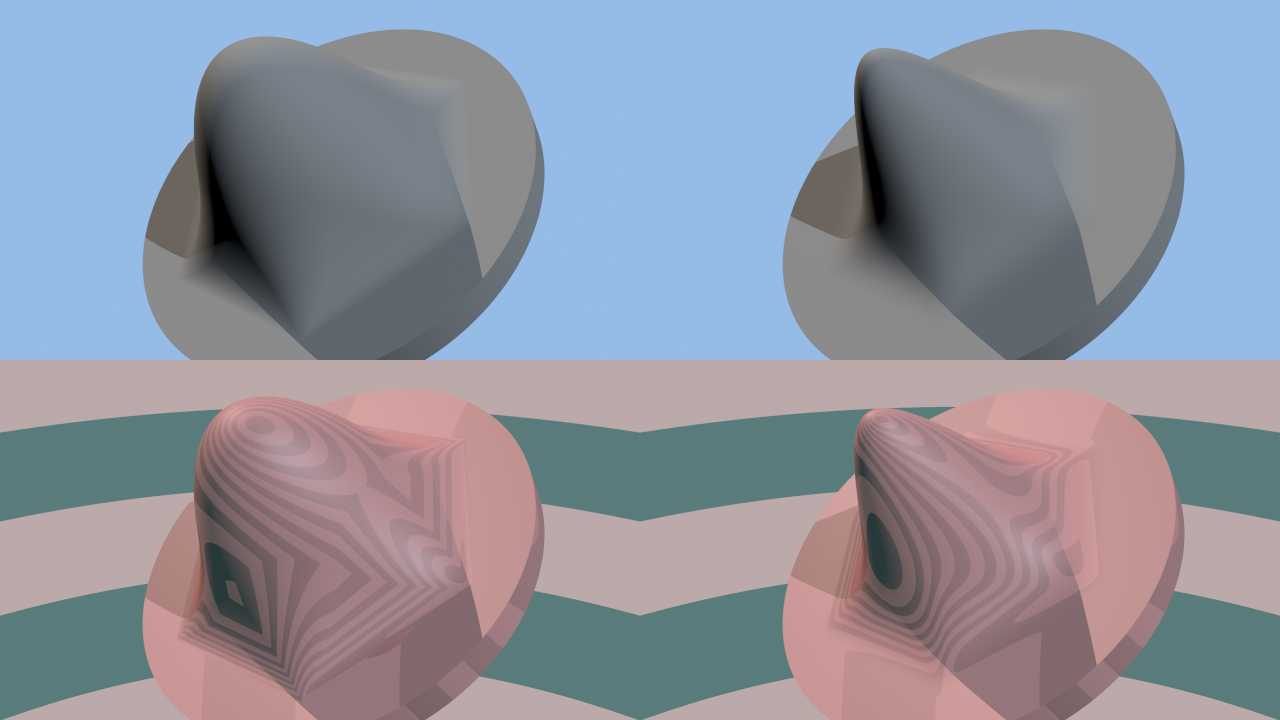
Let me illustrate what smoothness of a surface means. The image below depicts basic shapes of four different levels of smoothness. These can be used as building blocks for height fields or elevation maps, i.e. for virtual landscapes.

Imagine a grid of equilateral triangles, such that any of the above shapes can be placed on a vertex. Then that shape would cover just the six triangles sharing this vertex. If you add many such building blocks on top of each other on many vertices, you can build arbitrary elevation maps on top of the triangular grid. (That isn't the complete truth, but will do for an illustration.)
From left to right, the objects are: constant height, piecewise linear (i.e. straight), piecewise quadratic (i.e. the pieces can have a single bend, or arch to a single side), and piecewise cubic (i.e. those are more flexible and can bend into an S-shape with two arches on opposite sides). For the buzzword-inclined: the shapes are bivariate spline basis functions. They can be understood as polyhedral splines, i.e. as two dimensional shadows of the following polytopes: a two-dimensional hexagon (duh!), a three dimensional cube, a four dimensional orthoplex (generalized octahedron), and a five dimensional simplex (generalized tetrahedron).
On the top row, all surfaces are matte (i.e. the illumination is diffuse, also known as lambertian). On the bottom row, the objects are somewhat glossy and show highlights (i.e. approximated specular reflections of the light sources). The highlights tend to give more depth to the two straight shapes in the left half of the picture. But the gloss also emphasizes subtle flaws in the curved shapes in the right half.
The creeping highlights are - pardon the pun - creepier in this animation loop. I think this is because lighting depends on the surface normal, i.e. a tangent, i.e. the first derivative of the surface being lit. So we lose one degree of smoothness. This does not matter much in case of diffuse illumination, which varies very slowly and smoothly. But specular reflection is focused and can create sharp contours, so the loss of tangent continuity results in visible cusps and corners.
Most of the flaws can successfully be concealed when there is other surface detail, i.e. a texture:

This welcome side effect of surface textures remains quite effective during animation, too. Nevertheless, if you want objects that are looking perfectly smooth under all circumstances, you will need at least the degree of smoothness depicted all the way to the right. Such surfaces are said to be at least twice "continuously differentiable", usually abbreviated as C² or G². Higher degrees of smoothness don't hurt, but their benefits are nowhere near as striking as the jumps between the first few levels of smoothness.
Addendum:
Reflection lines let the difference between C¹ and C² really stand
out:

When seen in animation, both surfaces are shiny, but the higher C² smoothness one appears to be flowing almost like a liquid. It is truly seamless.